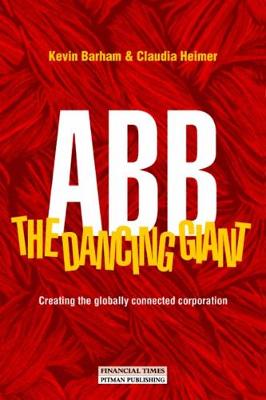"If we didn’t write this book, we would be dying to see it published. Whenever one reads about ABB in the management literature, there is a ‘no questions asked’ quality of ‘if ABB has done it, why can't you, it must be the right thing to do. This is the way to do it, this is what ABB have done.’"- Claudia Heimer & Kevin Barham
There is almost an ABB doctrine that fascinates both scholars and managers. Why is ABB so interesting to managers and gurus alike? Why is it the world’s favorite case study? Why is Percy Barnevik possibly ‘the most influential manager in the world’ (according to the Observer newspaper)
In June 1987, Beat Hess, head of the legal department of the world-famous Swiss electro-technical firm BBC Brown Boveri, was about to take his family on a well-earned week’s holiday to Italy. He was suddenly told by BBC’s chairman Fritz Leutwiler and chief executive Thomas Gasser, to prepare a full draft agreement for the ‘unthinkable’ - negotiations for a merger with long-time rival ASEA, the Swedish power engineering firm that had been gaining ground on Brown Boveri ever since a new CEO, Percy Barnevik, had taken over in 1980. If it came off, this would be the largest cross-border merger in history.
Hess was told to go ahead with his holiday if he wanted to, but that the agreement had to be completed by the first week in July. The handwritten draft with its coffee and suntan lotion stains that Hess brought back from Italy was to be the basis for what has now become a legend of corporate history.
ABB has grown to be the leading power engineering company in the world. It doubled its size in six years and is now a $31 billion corporation employing 213,000 people in 50 or more countries, including all the major markets, around the globe. According to the last three years’ surveys in the FT, it is Europe’s most admired company and Percy Barnevik, Europe’s most admired CEO.
How do we make sense of what ABB has achieved? Their success, in one of the most fiercely competitive industries in the world, a success which is all the more remarkable for a company which pioneered a new form of global organization. Percy Barnevik has described the paradoxes that ABB has tried to resolve as the simultaneous attempt to be ‘global and local, big and small, and radically decentralized with central reporting and control.’
In essence, Barnevik and his senior colleagues at ABB have tried to resolve these contradictions by creating what we call a ‘globally-connected corporation’, a loose-tight network of processes and partners which can only be held together by highly committed people and strongly-held principles.
The gurus fell in love with ABB very quickly...
Tom Peters calls ABB a ‘buckyball organization’ and says that Percy Barnevik is the most insistent enemy of bureaucracy that he has ever met.
Manfred Kets de Vries has described the challenge of managing ABB as ‘making a giant dance’,
While it may not be a model for every other company, it is certainly an example of what most companies can achieve.
ABB The Dancing Giant gives its reader the exciting opportunity to look through the keyhole and hear from some very interesting people around ABB, both in the corporate headquarters and locations world-wide.
It will also satisfy their curiosity about the heritage of Percy Barnevik, who has almost come to personify the company. It will look at how the company is doing now that he has passed on the role of CEO to Göran Lindahl. You will be able to look behind his image and public statements and find out what other people in the company think, how they lived the story of the merger, and what life is like for them in the organization.
ABB the Dancing Giant has not been written simply for the sake of a fascinating history, which it certainly is, but to ask ourselves what other m
- ISBN10 0273628615
- ISBN13 9780273628613
- Publish Date 15 December 1998
- Publish Status Out of Print
- Out of Print 15 March 2021
- Publish Country GB
- Imprint Financial Times Prentice Hall
- Format Paperback
- Pages 400
- Language English
